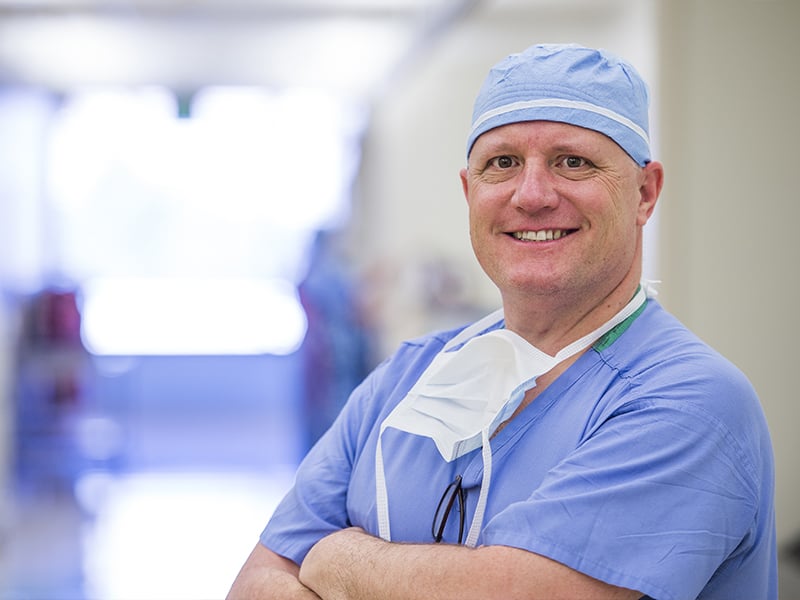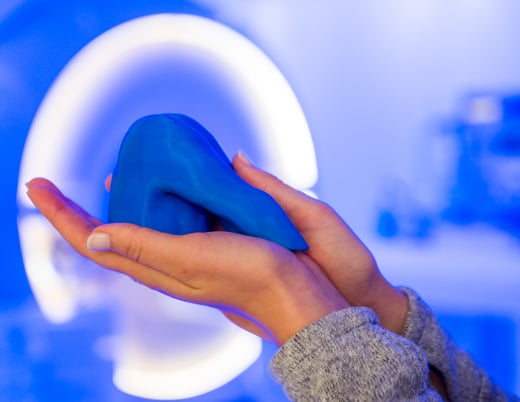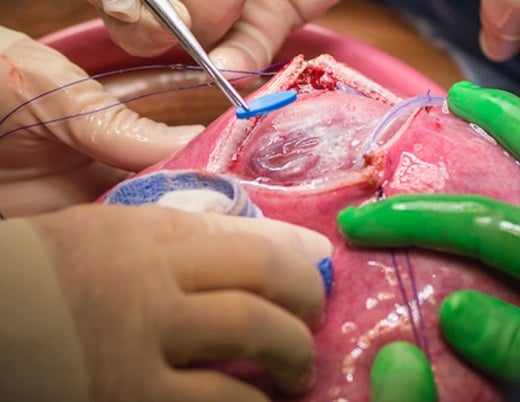In the womb, the fetus holds its breath. This is how the lungs grow: fluid naturally builds up in the lungs, creating pressure and forcing them to expand. When the pressure is great enough, the baby exhales.
"We figured this out," says Kenneth Liechty, MD, pediatric and fetal surgeon at the Colorado Fetal Care Center at Children's Hospital Colorado, "because we noted babies with a blockage of the airway before birth have really huge lungs."
The opposite is true for babies with congenital diaphragmatic hernia (CDH), essentially a large hole in the diaphragm. Without a barrier to keep them in place, abdominal organs float up into the chest and crowd the lungs, stunting their growth.
"These are some of the sickest babies we care for," Dr. Liechty says. "It's not just the size of the lungs, it's the size of the vessels, too. When blood can't get out from the heart through the lungs, it finds another way around. What you have then is the heart pumping blue blood to the rest of the body."
Doctors wondered: If you blocked a fetus's trachea, would the buildup of fluid offset the pressure of the abdominal organs and result in lung growth?
"Initially the procedure opened up the mother's uterus, then opened up the fetus's neck and put a clip on the trachea," Dr. Liechty says. "We saw some improvement, but there was high morbidity."
Aside from extreme risk and invasiveness, the problem was that a complete blockage prevents the development of surfactant, a protein that opens the lung' internal airways, eliminating babies' ability to breathe. The solution to both problems: a very small balloon.
The process, called fetoscopic tracheal balloon occlusion (FETO), begins with a three-millimeter skin incision at 27 to 29 weeks' gestation. The Colorado Fetal Care Center's surgery team inserts the deflated balloon, about the size of a grain of rice, into the mother's uterus at the end of a fetoscope, guides it into the fetus's mouth, down its throat and into the trachea, and then blows it up. At 34 weeks, the team pops the balloon and pulls it out. A window of even 24 hours before birth can be enough time for sufficient surfactant to build up.
Currently under FDA investigational device exemption, which allows unapproved technologies to be used for testing, this approach is extremely new.
"We're one of just a few sites in the United States capable of doing this, and we're the only one that's actually done it," Dr. Liechty says. And although it's too soon for outcomes data, two cases so far have both produced good lung growth.
"The national survival rate for this condition is about 62%," says Dr. Liechty. "We currently have survival rates at 85%" — meaning survival rates for CDH at the Colorado Fetal Care Center, right now, are the best in the nation.
Featured Researchers
Kenneth Liechty, MD
Pediatric and fetal surgeon
Colorado Fetal Care Center
Children's Hospital Colorado





 720-777-0123
720-777-0123










